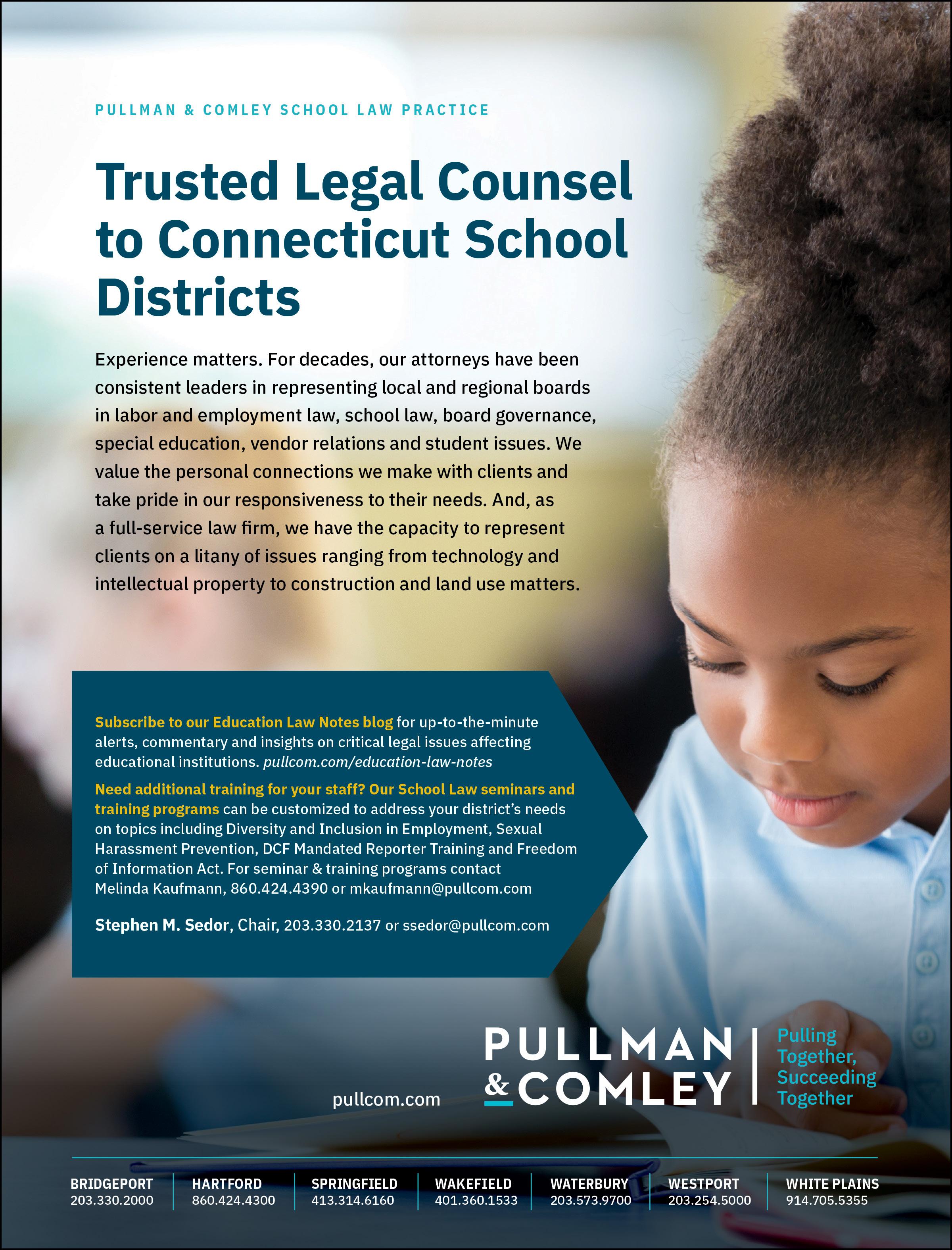Happy Board of Education Appreciation Month!






The 2024 Legislative Session convened on February 7. The short session is different from the long session by more than just length, three months versus five months.
Legislators need to lobby their leadership colleagues to have their individual bills considered and the two-year budget is adopted in the long session with budget adjustments in the short session - maybe a little bit of a stretch considering how much budget issues always dominate the legislature.
The Governor and Legislature approved $150 million in education finance reform funding last year and in the Governor’s budget adjustment, while the ECS commitment has held, the $48 million in state payments to sending towns for magnet education has evaporated. Back on the positive scale, there is $3.5 million for the science of reading professional development for SDE and CAPSS to jointly develop and deliver. Specifically, to combat truancy, the Learner

March is National Reading Month!
CABE President Leonard Lockhart (Windsor) opened the Board of Directors January retreat by asking each participant to discuss what motivated them to serve on the CABE Board of Directors. Responses included:
• I can’t do my job as a board member without CABE in my toolbox
• I have always appreciated CABE’s professional development
• CABE is a marvelous resource
• The CABE board chair checkin is an excellent resource in contentious times
• CABE is invaluable Staff provided an overview of
actions taken to fulfill the 2023 CABE Priorities. Following discussion, the Board identified the following three priorities for 2024:
Leadership
• Serve as the leading institution in helping Boards of Education with internal issues, diversity and inclusion, social-emotional learning and providing best practices in relevant area.
• Broaden the knowledge of the responsibilities of Boards of Education across the State.
• Build awareness, understanding and support for CABE’s mission, work and impact among member districts, prospective member districts, other K-12 education leaders, elected officials and others.
CABE staff is developing the action plan to achieve these priorities.
CABE is a membership organization comprised of approximately 150 school districts of ALL SIZES (the average size school district is just shy of 3,000 students)! As any service organization does from time to time, we have looked at our governance structure to make sure we truly represent all aspects of out constituency.
We looked at the demographics of CABE’s governance including the CABE Board of Directors and how the Association is represented by its membership at the CABE Delegate Assembly.
There are approximately 480,000 public school children in Connecticut. They are served in districts as small as 55 (Union) to just under 20,000 (Bridgeport).
There are currently 38 members of the CABE Board of Directors. These directors represent a cross section of Connecticut. A look at the accompanying chart shows that the board is relatively evenly divided by district size.
There are 33 communities represented by CABE Board of Directors members.
March is Board of Education Member Appreciation Month and provides an amazing time to focus on the important role of an elected board of education for our schools, communities, and state. Unlike school board members in many other states, Connecticut school board members receive no compensation for their service, receiving only the satisfaction that comes from providing an indispensable public service. On behalf of the CABE Board of Directors, our Executive Director, and CABE staff, thank you for all you do to provide high quality public education through your respective Superintendent for all children in the State of Connecticut.
CABE was well represented in D.C. at the recent NSBA Equity Symposium and Advocacy Institute which concluded with meeting Connecticut’s U.S. Senate and U.S. House of Representative members.
Advocacy is a part of a board of education’s work. We must defend budgets within our local governments to fund education. Part of the work rests at the state level through the Connecticut General Assembly. In January, CABE presented a webinar on Lobbying Your State Legislators presented by Sheila McKay, Sr. Staff Associate for Government Relations. Her presentation spoke about timelines, signing up for and delivering testimony, messaging, methods of contact, strategy, compromise, and tips for effective communications with the state representatives and state senators that represent your town. This work allows you to lobby your state representatives to support high quality education within your town and the state. It impacts all of us regardless of urban, suburban, rural, and alliance districts.
At the time of scribing this message, Advocacy Highlights were shared with Governor Lamont’s Mid-Term 2024 Budget adjustments:
• ECS - will meet the goal of full funding by 2026, two years earlier than the 2017 budget commitment.
• Magnet school tuition - sending
district payment from state Remove $48 million.
• LEAP Program - home visits to decrease chronic absence, $7 million.
• School meals - increase $5.6 million from ARPA funds providing free breakfast and subsidizing the student’s share of reduced-price lunch.
• Reading - the Science of Reading master class, SDE and CAPSS jointly developed a learning and coaching model, $3.5 million.
• Teacher scholarships - Aspiring Educators Diversity Scholarship Program decreased by $6 million.
• Eliminate the Initial Educator Certificate fee of $200 per applicant.
As you meet with your respective local board, town government officials, and Connecticut General Assembly representatives, please be mindful to share the human impacts of public education in your community. Please follow HB-5050, HB-5056, and SB-14 as these bills are linked to implementing the Governor’s budget. The budget has proceeded to the Appropriations Committee for presentations and public hearings. Lobbying is a useful tool for all boards of education. Our efforts help support and provide resources for your superintendent.
A special thank you to Honorable Representative Jeff Currey, Education Committee Co-Chair, for attending the February 2024 CABE Board of Directors meeting to share, receive, and respond to candid conversation about the Right to Read legislation with waivers being a major concern. A historical perspective was offered and well received. After substantive discussion, CABE is committed to continued work with Rep. Currey and all educational partners as we navigate the legislative and implementation process to address the concerns of all involved as we are all concerned about the K-3 Curriculum. Everyone agrees we want all our children reading at or above grade level.
CABE has been involved in the Educator Evaluation and Support

Council. The process started with trust followed by guiding principles and researching best practices with Connecticut and other states. We used a consensus protocol that provided opportunities for discussion and clarification. After almost two years of work, the Connecticut Educator and Leader Evaluation and Support Guidelines were created. The evolution was rooted from the formation of the last process. CT Guidelines 2023 promote educator and leader continuous improvement to support students and educator learning, development, growth and achievement, and the positive outcomes that can be achieved through professional learning.
The goal is improved student performance while enhancing teacher development. Professional Development and Evaluation Committees focus evaluation and support – the two process that work together to inform professional learning that leads to highly effective professional practice. Please review your superintendent’s annual report on the status of the evaluation process and support your Superintendent for more professional development resources.
Finally, I invite you to join CABE for Day on the Hill on March 13, 2024. Stay for a day of motivation, discussion, and advocacy.
I end with Mary McLeod Bethune’s legacy for us through her quote, “I leave you to love. I leave you to hope. I leave you the challenge of developing confidence in one another. I leave you the thirst for education. I leave you a respect for the use of power. I leave you faith. I leave you racial dignity. I leave you a desire to live harmoniously with your fellow men. I leave you a responsibility to our young people.”
What a way to enter Women’s History Month and continue the battle for high quality public education for all our children in the State of Connecticut.
Vision: CABE is passionate about strengthening public education through high-performing, transformative local school board/ superintendent leadership teams that inspire success for each child.
EXECUTIVE COMMITTEE
Leonard Lockhart | President, Windsor
Meg Scata | First Vice President, Portland
Lon Seidman | Vice President for Government Relations, Essex
Eileen Baker | Vice President for Professional Development, Old Saybrook
Anthony Perugini | Secretary/Treasurer, Cheshire
Elizabeth Brown | Immediate Past President, Waterbury
Lydia Tedone | NSBA Director, Simsbury
Ethel Grant | Member at Large, Naugatuck
AREA DIRECTORS
Marion Manzo | Area 1 Co-Director, Region 15
Thomas van Stone | Area 1 Co-Director, Waterbury
Douglas Foyle | Area 2 Co-Director, Glastonbury
Tyron Harris | Area 2 Co-Director, East Hartford
Philip Rigueur | Area 2 Co-Director, Hartford
Karen Colt | Area 3 Co-Director, Vernon
Sara Kelley | Area 3 Co-Director, Stafford
Jay Livernois | Area 4 Co-Director, Woodstock Academy
Chris Stewart | Area 4 Co-Director, Putnam
Ailla Wasstrom-Evans | Area 4 Co-Director, Brooklyn
Chris Gilson | Area 5 Co-Director, Newtown
Tina Malhotra | Area 5 Co-Director, Ridgefield
Lee Goldstein | Area 6 Co-Director, Westport
Jill McCammon | Area 6 Co-Director, Darien
John Hatfield | Area 7 Co-Director, Seymour
Edward Strumello | Area 7 Co-Director, Seymour
Lindsay Dahlheimer | Area 8 Co-Director, Region 13
Seth Klaskin | Area 8 Co-Director, Madison
Kim Walker | Area 8 Co-Director, Westbrook
Carol Burgess | Area 9 Director, Montville
ASSOCIATES
Julia Dennis | Associate, Berlin
Ethel Grant | Associate, Naugatuck
Robert Mitchell | Associate, Montville
COMMITTEE CHAIRS
Lee Goldstein | Chair, Federal Relations, Westport
Laurel Steinhauser | Chair, Resolutions, Portland
Lindsay Dahlheimer | Chair, State Relations, Region 13
CITY REPRESENTATIVES
Joseph Sokolovic | City Representative, Bridgeport
A. J. Johnson | City Representative, Hartford
Yesenia Rivera | City Representative, New Haven
Gabriella Koc | City Representative, Stamford
LaToya Ireland | City Representative, Waterbury
VALEDICTORIAN
Connecticut Business Systems –A Xerox Company
Finalsite
SALUTATORIAN
Berchem Moses PC
Pullman & Comley
Shipman & Goodwin
HONOR ROLL
JCJ Architecture
Kainen, Escalera & McHale, P.C.
Newman/DLR Group
Solect Energy
SCHOLAR
Brown & Brown
Chinni & Associates, LLC
Coordinated Transportation Solutions Dattco, Inc.
ESS Franklin Covey GWWO Architects
The Lexington Group Perkins Eastman
The S/L/A/M Collaborative
Zangari Cohn Cuthbertson Duhl & Grello, P.C.
American School for the Deaf Area Cooperative Educational Services (ACES)
Booker T. Washington Academy
Cambridge International Capitol Region Education Council (CREC)
Connecticut Alliance of YMCAs Connecticut Arts Administrators Association
Connecticut Association for Adult and Continuing Education (CAACE)
Connecticut Association of School Business Officials (CASBO)
Connecticut School Buildings and Grounds Association (CSBGA)
Connecticut Technical High Schools Cooperative Educational Services (C.E.S.)
EASTCONN
EdAdvance
Explorations Charter School
Great Oaks Charter School
Integrated Day Charter School ISAAC
LEARN
New England Science & Sailing Foundation
Odyssey Community School, Inc.
The Bridge Academy
The CABE staff appreciates the service of school board members
EVERY day, but in March we make a special effort to thank the 1,430 volunteers who govern Connecticut’s public schools. School board members comprise the largest group of elected officials in the state, and your countless volunteer hours exemplify public service.
School board members represent ALL the students in the school district. At every board meeting – and often in conversations at the grocery store or soccer field – you face complex and demanding challenges. The important responsibility under the Connecticut Constitution – “There shall always be free public elementary and secondary schools in the state” – is delegated to boards of education by the state legislature. School board members bring their individual personal and professional experiences to board service,
but there are united by their responsibility to the students in their schools. The goal of every board of education should be to work together to create meaningful educational experiences for all students.
School board members serve as role models for their students and community, demonstrating civility as they face difficult decisions. Whether discussing budget priorities or policy issues, the ability to listen to the views of the public as well as fellow board members results in sound decisions. Professional development opportunities help board members learn how to govern effectively and work as a leadership team with the superintendent.
The advocacy role of school board members extends beyond advocating for the budget in your local community. Legislators at the state and federal levels need to hear how various legislative proposals will impact your ability to provide meaningful educational opportunities for all students.
On behalf of the CABE staff, I

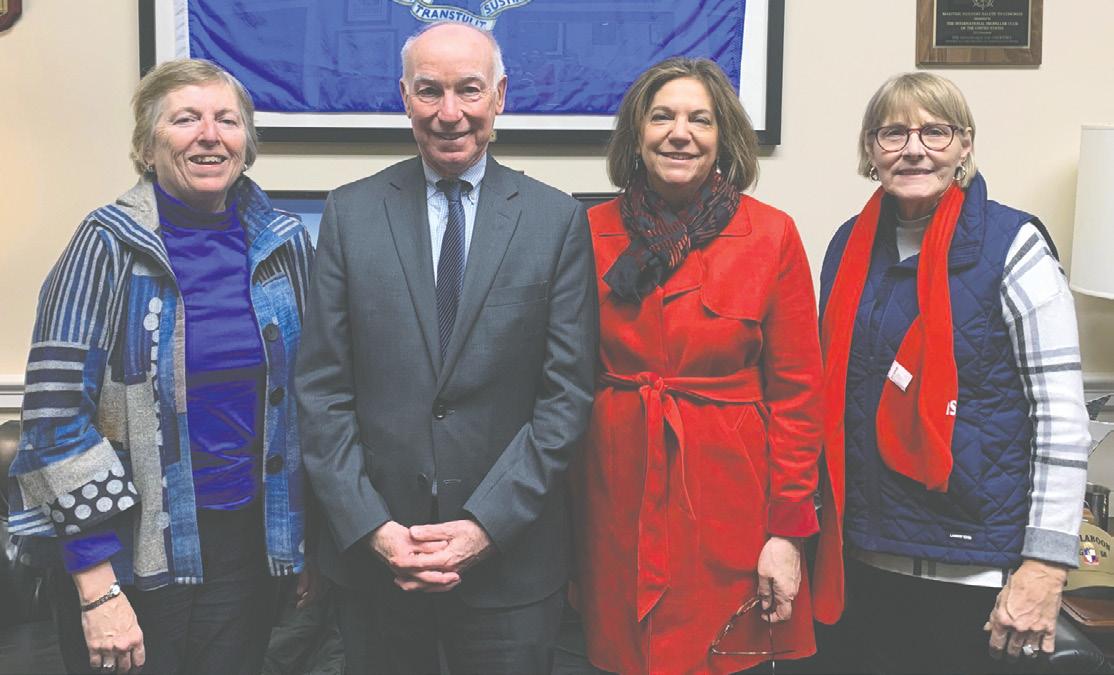

extend my sincere appreciation for the commitment of every school board member in Connecticut. We will continue to support you through CABE’s mission – “To assist local and regional boards of education in providing high quality public education for all Connecticut children through effective leadership.”
“If your actions inspire others to dream more, learn more, do more and become more, you are a leader.”
– John Quincy Adams


The Nutmeg Board of Education makes many mistakes. The latest imbroglio created by the board will be reported here each issue, followed by an explanation of what the board should have done. Though not intended as legal advice, these situations may help board members avoid common problems.
The members of the Nutmeg Board of Education were exhausted from a very difficult budget season. Ms. Superintendent was therefore reluctant to tell the Board members that they had to schedule a time to hear a parent’s complaint. Board policy in Nutmeg provides that parents with complaints must follow the chain of command, through the teacher, principal, assistant superintendent, and superintendent. If the parent is still not satisfied, however, the Complaints Policy in Nutmeg provides that the Board of Education will hear the complaint and provide a final and binding response.
Mr. Chairperson scheduled the hearing at the end of a regular meeting of the Board. When the Board got to that agenda item, Mr. Chairperson asked for a vote to go into executive session to hear a parent complaint. Veteran Board member Bob Bombast, however, was particularly cranky, and he challenged Mr. Chairperson on this point.
“Over the years, I have developed a comprehensive understanding of the Freedom of Information Act,” Bob announced. “I am well aware that there are only five reasons under the law for which public agencies can convene in executive session, and ‘Parent Complaint’ is not one of them. I, for one, will not be voting to go into executive session.”
The patience of the other Board members for Bob’s grandstanding had worn thin during the budget process, and Board member Mal Content simply said, “So moved,” and Penny Pincher promptly seconded the motion. The vote was 4 to 1, and Mr. Chairperson convened the Board in executive session, inviting Ms. Superintendent and the parent to join the Board.
Once the Board was in executive session, Mr. Chairperson recognized the parent and asked her to present
her complaint. Tearfully, the parent began. Her son had been framed by another student, she claimed, whose allegations of harassment against the son had resulted in his being suspended for three days. The parent explained that she had appealed to the principal, the assistant superintendent and, finally, Ms. Superintendent, but no one wanted to listen. She ended by asking the Board to expunge the suspension from her son’s record.
When the parent was done, Ms. Superintendent told the Board that the suspension of students is an administration responsibility and that the Board should just reject the complaint. Mr. Chairperson then asked the parent if she had anything further to say, and when the parent said no, the Board promptly denied the complaint and reconvened in open session. Before the Board adjourned the meeting, however, Red Cent, Chair of the Policy Committee, told the Board that he would be proposing a revision to the Complaint Policy, because hearing that parent’s complaint had been a colossal waste of the Board’s time.
Red Cent followed through, and he put “Revision of the Complaint Policy” on the agenda for the next meeting of the Policy Committee. There was great interest in this matter among the Board members, and Board members who were not on the Policy Committee came to the meeting, resulting in a quorum of the Board being present when the Policy Committee meeting convened. Seeing the other Board members, Red Cent was concerned that he would now be presiding over a meeting of a quorum of the Board that had not been posted, and after explaining his concern, he asked the Board members who were not on the Committee to leave.
Did the other Board members have to leave the Policy Committee meeting?
The Board members not on the Policy Committee had every right to attend the meeting as long as they are not given special privileges. The Freedom of Information Act (FOIA) specifies that “A quorum of the members of a public agency who are present at any event which has been noticed and conducted as a meeting of another public agency under the provisions of the Freedom of Information Act shall not be deemed to be holding a meet-
ing of the public agency of which they are members as a result of their presence at such event.” Conn. Gen. Stat. § 1-200(2). If other Board members in Nutmeg attend a properly-posted meeting of the Policy Committee as visitors, the presence of a quorum of the Board, as such, is not a “meeting” under the FOIA. However, if the other Board members attending the meeting act together by speaking or by sitting at the table together, the meeting could morph into an unposted (and thus illegal) meeting of the Nutmeg Board of Education.
This situation raises other FOIA and policy issues. As to the FOIA, Bob Bombast claimed that the Board could not discuss a “Parent Complaint” in executive session. He was wrong. Bob correctly stated that there are only five reasons for which a public agency can convene in executive session. However, the last of the five is “discussion of any matter which would result in the disclosure of public records or the information contained therein described in subsection (b) of section 1-210.”
The cited statute sets forth the list of records that are exempt from disclosure, including, for example, attorney-client privileged communications and records describing negotiation strategy. Another category of exempt records is “Educational records which are not subject to disclosure under the Family Educational Rights and Privacy Act, 20 USC 1232g,” (FERPA), which includes personally-identifiable student records. It was appropriate for the Board to discuss the parent’s complaint in executive session because it involved a discussion of student discipline records, which are confidential under FERPA.
Notably, “discussion” is the operative word, and the Board committed a faux pas when it denied the parent’s complaint while it was still in executive session. Boards of education can discuss a number of subjects in executive session as specified in the FOIA, but the executive session privilege
See SEE YOU IN COURT page 6
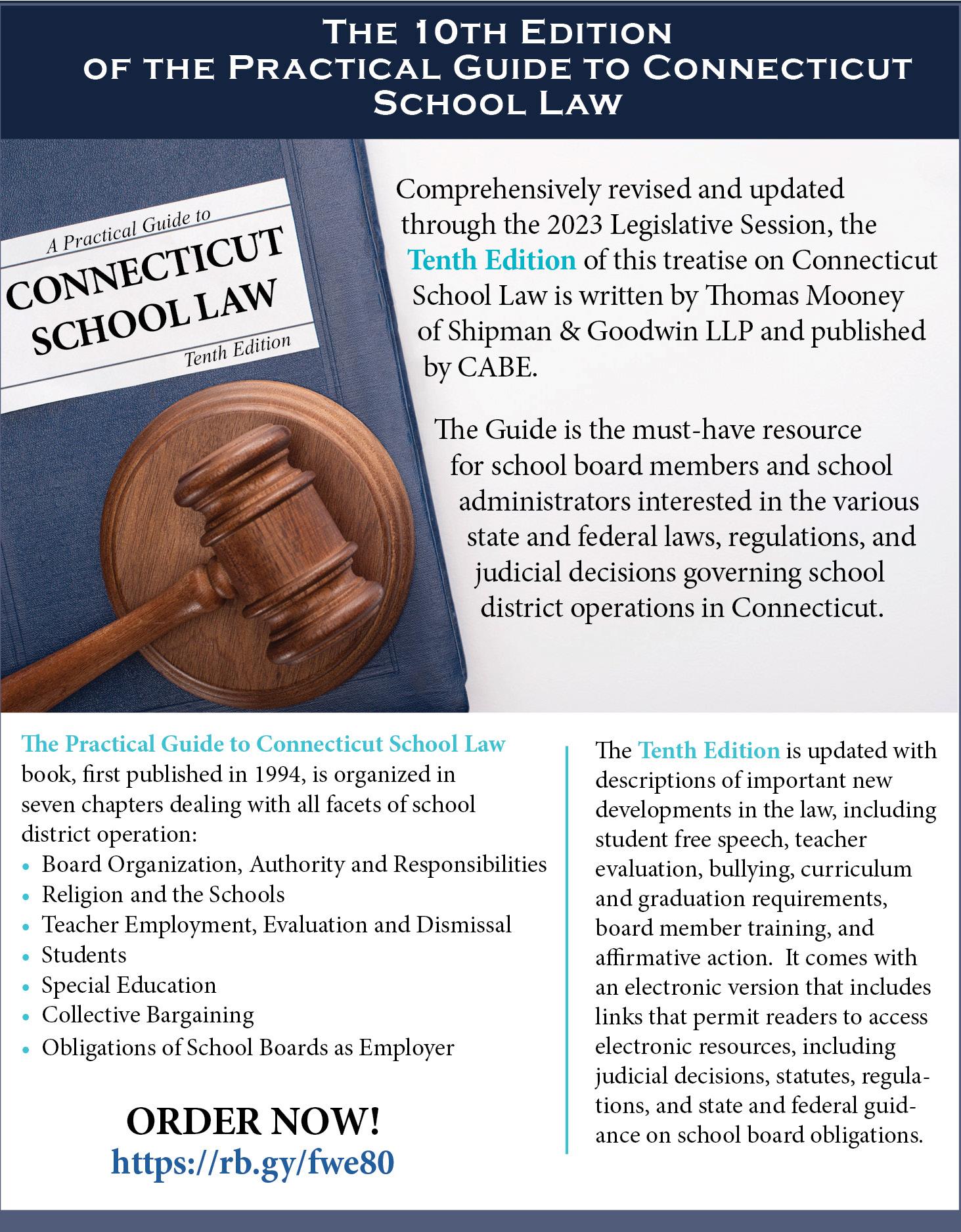
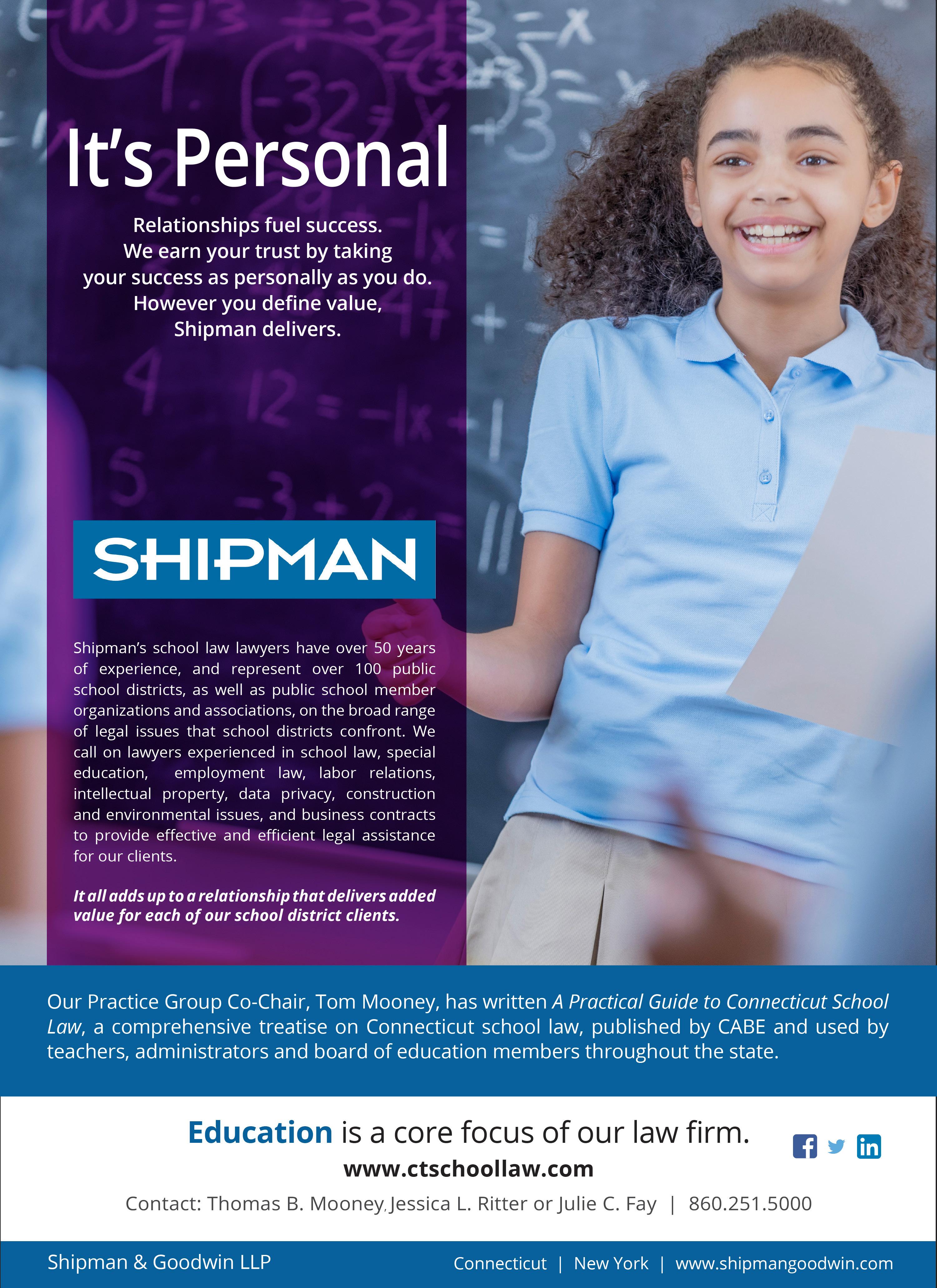
Below are the highlights of activities that the CABE staff has undertaken on your behalf over the last month. We did this:
By providing opportunities for members to learn how to better govern their districts:
z Presented a Roles and responsibilities workshop for the Bridgeport, Danbury, East Granby, East Windsor, Norwich, and Sterling Boards of Education.
z Responded to 57 requests for policy information from 40 districts, providing sample materials on policy topics. Further, districts continue to access CABE’s online Core Policy Reference Manual and/or online manuals posted by CABE for policy samples. The topics of greatest interest were those pertaining to exit interviews, increasing educator diversity, and ages of attendance.
z Provided support to board members and central office administrators regarding policy matters.
By ensuring members receive the most up-to-date communications:
z Sent one issue of “Policy Highlights” via e-mail which provided a newly revised model policy on Increasing Educator Diversity and the Connecticut School Climate Policy with a new Challenging Behavior Reporting Form.
By promoting public education:
z Staffed CABE/CAPSS Convention Committee meeting.
By providing services to meet member needs:
z Facilitated focus groups on communications for Darien Board of Education.
z Provided Roles and Responsibilities workshop and facilitated goal setting for Middletown Board of Education.
z Supported Urban Boards Legislative Network meetings.
z Discussed superintendent search process with the Montville Board of Education.
z Coordinated webinar on Educator Evaluation and Support Guidelines
z Provided webinar on state budget proposals.
z Responded to a variety of legal inquiries from members.
z Facilitated a board self-evaluation with the Waterbury Board of Education.
z Facilitated a board retreat for the Preston and Salem Boards of Education.
z Revised policies, as part of the Custom Update Policy Service, for Marlborough, New Fairfield, New Hartford, Sterling, and Union
z Prepared materials, as part of the Custom Policy Service, for Region 14, Stratford, and Woodbridge

z Preparing an audit of the policy manual for the New Britain Public Schools. Preparing a targeted series audit for the Newtown Public Schools.
z Currently assisting East Haddam and Regional School District One Boards of Education with their superintendent search.
By attending Professional Development to strengthen staff knowledge and skills:
z Participated in CT Society of Association Executives (CSAE) webinar on marketing trends.
By helping districts operate efficiently and conserve resources:
z Facilitated Board Chair Check-In.
z Chaired Education Mandates Working Group meetings.
z Posted policies online, as part of the C.O.P.S. Program for Bolton, Bristol, Portland, Preston, Seymour, Voluntown, Westport, and the CABE CORE Manual.
(continued from page 4)
extends to only discussion, and any action must be taken in open session. Board member Red Cent properly brought the Nutmeg Complaint policy to the Policy Committee for further consideration. As written, the policy makes the Board the arbiter of last resort for any disagreements that cannot be resolved by the Superintendent. This provision creates two problems for the Nutmeg Board. First, it can involve the Board in operational matters that are and should remain the responsibility of the Superintendent (who by statute is the chief executive officer of the board of education). Second, it causes the Board to lose control of its agenda because any disaffected person can demand a meeting with the Board. If boards of education wish to have a complaint policy, it is important to reserve to the board the decision whether to hear a complaint. CABE’s policy service can provide examples
By representing Connecticut school boards on the state or national level:
z Participated in CT Certification Council meetings to revise certification process.
z Attended legislative breakfasts in CABE Areas 1, 4, and 8.
z Participated in Special Education Task Force meeting.
z Attended NSBA Equity and Advocacy Conferences and lobbied CT Congressional delegation.
z Met with Education Committee CoChairs.
z Attended CT Literacy Forum.
z Provided legislative update to ACES Board of Directors
z Attended Discovering Amistad Board of Directors meeting.
z Invited to join the Digital Learning Advisory Council, where at the last meeting discussed cell phone use policies in schools.
z Participated in New England School Public Relations Association (NESPRA) Executive Board meetings and Chapter Check-In.
of appropriate complaint policies for boards to consider.
Finally, members of the public can demand a hearing by a board of education in one circumstance. Conn. Gen. Stat. § 10-238 provides that, if one percent of the voters (or fifty voters, whichever is greater) sign a petition demanding a hearing, the board of education must hold “a public hearing on any question relating to the provision of education offered by such board specified in such petition” within the three weeks of the date the petition is received. Fortunately, such petitions are rarely submitted, and the obligation is only to conduct a hearing, and boards are not required to take any other action on the petition.
Attorney Thomas B. Mooney is a partner in the Hartford law firm of Shipman & Goodwin who works frequently with boards of education. Mooney is a regular contributor to the CABE Journal. Shipman & Goodwin is a CABE Business Affiliate.

CABE’s Senior Staff Associate for Field Services, Nicholas Caruso, recently facilitated his 1600th workshop with boards of education across Connecticut.
While many CABE staff provide workshops on issues ranging from roles and responsibilities, superintendent search process, board self-evaluation, freedom of information, hot legislative issues and district goals; Nick is our front-line support for local boards in their district. Certainly 1,600 is certainly a milestone worth noting!
Nick’s work has enabled him to write an ongoing column for the American Association of School Administrators monthly magazine and to provide helpful advice to many districts. He has presented on board of education work across the county and has had numerous articles published in various statewide and national publications. In his 30-year career (and 10 as a board of education member), he has worked with all but 7 of the 169
boards of education across Connecticut.
We recently asked Nick to draw on his long experience and provide some wisdom and knowledge helpful to boards and superintendents across Connecticut.
What is the most important lesson you’ve drawn from your field services work?
I would say there are three lessons I’ve learned. The first is that School Boards matter! The important work of ensuring that every child has an opportunity to receive a quality education cannot be sustained without effective School Board leadership! As any leadership organization, boards can either be part of the solution or part of the problem, and the stakes are too high for them to contribute to failure. Nothing gives me greater joy, than when I contribute in any way to a board reaching a higher level of performance.
The second lesson is that none of us ever stop learning. One of the great joys of my work is that after 40 years of
involvement with school board leadership, I still have more to learn. Every experience I have with a board teaches me something new. Boards govern a learning organization, so, it stands to reason that the adults should be learning every bit as much as the students.
Finally, I learned a long time ago that boards often spend little time agreeing about the problems they are faced with, but jump right into solution-mode. Unless there is agreement on the problem is, there is little likelihood that all board members will agree on the solution put forth by the superintendent.
When you provide a workshop, what are some of the issues that boards and superintendents want to discuss?
• Dealing with community members who expect “me” to fix something.
• Keeping politics out of the board room.
• Matters related to FOI.
• Distinguishing the roles of the board members vs. the
Superintendent.
• Appropriate lines of communication between board members and superintendents.
What have been some of your favorite activities with boards?
I love helping boards troubleshoot issues and help them work through a challenging situation. The important thing is that I never walk in and state, “Here is your solution”. If a resolution is to have meaning, it needs to come from the board and superintendent team. If I do my job correctly, the team works through the issue and comes up with the solution.
What has been your most difficult experience with a board or superintendent? Please don’t mention the district by name!
Not one, specifically; but dealing with boards who have one of more toxic personalities. Sometimes the board itself is doing well, but the community they represent is toxic and there is constant pressure on the board to follow suit. Helping the board to
See CARUSO FACILITATESpage 9
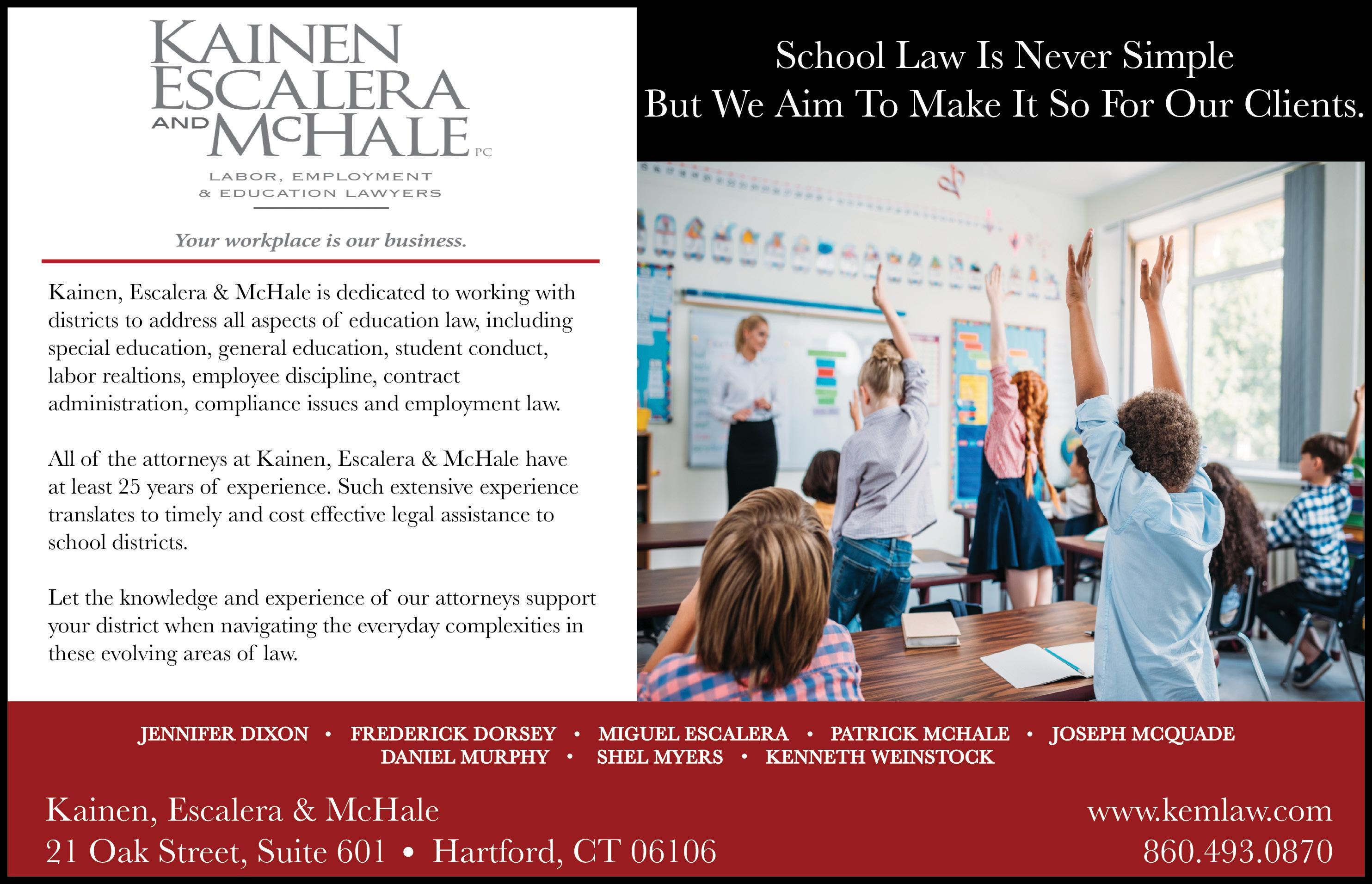
The old weather proverb tells us March rolls in like a lion and out like a lamb. As March’s unpredictable weather will likely add an element of surprise as we transition to Spring, one constant remains: March is Board Appreciation Month. While the month is long and can keep us off-balanced with a beautiful day followed by a cold and dreary day, we can perhaps treat our hard-working board members with a little more lamb than lion. This is a great time to acknowledge the critical role boards of education play in developing policy for their districts.
Having served various boards in my role as superintendent, I’ve witnessed first-hand the extraordinary work of policy committees keeping their district policies compliant with new legislation and court decisions. Adding to the complexity of this work, the pandemic added a layer of seemingly endless executive orders to track, some of which required policy updates. Sadly, our communities don’t typically name buildings, or rooms for that matter, to honor those who review standing policies and draft new ones. But boy, are they important!
As our world continues to become more complex and community members have greater access to the board’s work and a wide array of tools available to share their thoughts and opinions, board members need to stay on top of recent legislative and societal trends impacting education policy. In addition to CABE’s Policy Highlights, which are sent to all CABE members, the Quarterly Policy Updates for subscribers, and Policy in Practice articles that appear in the CABE Journal, we invite policy committee members to participate in the quarterly Policy Matters Roundtable.
These Roundtable webinars are designed to be interactive and afford attendees the opportunity to delve more deeply into CABE’s most recently updated or new model policies. Topics range from what differentiates a “required” policy from one that is “recommended” to effective ways of implementing teacher exit interviews. While conducting such interviews are
now required by law, a policy is not. CABE does have a “recommended” policy to ensure this practice is understood and carried out. These webinars are recorded and available to members on CABE’s website under our professional development link.
Along with the policy services currently provided to member districts, our department continues to explore and develop ways we can better serve districts in their policy work. Specifically, CABE’s policy department is reviewing ways we can reduce the amount of paper and the number of steps currently involved in our “Customized Policy Service.”
In addition, we’ve begun offering districts opportunities to engage in “Targeted Series Reviews and Updates,” where we audit and update district policies in a specific policy series. Perhaps your district just needs to review and update the 6000 (Instruction) series or your bylaws, or you just need to review mandated policies. Where a complete policy manual update can be overwhelming and challenging for districts to complete, a series review and update can be more manageable and yield better results with less time for turnaround.
Finally, as one of the most effective ways for boards to avoid frustration and exhaustion and build on high performance and a sense of urgency and purpose, here are some tips to ensure your policy work remains on the straight and narrow:
• High-performing boards focused on establishing a vision supported by policies targeting student achievement.
• Effective policy practice begins with and relies upon data and evidence.
• Analyzing data requires asking the right questions – some of which may appear simple and obvious.
• Don’t dismiss qualitative data gathered from stakeholders.
• Develop a policy review calendar that mirrors the district calendar.
• Make it a board practice to review the policies that will be relied upon in the months ahead. For example, April is a great time
to review policies on graduation requirements and ceremonies.
• Track policy the same way you track your budget and strategic goals.
• Establish practice of identifying and tracking policies related to items before the board.
• Taking steps to become familiar with your policy manuals and keep them updated is the most efficient way to manage them.
(continued from page 8)
remain strong under pressure is sometimes a challenge to all of us.
Is there an optimal time for a board to do a workshop?
I’d start by saying that you should try hard to avoid scheduling a workshop on a board meeting night. Some boards will try and squeeze in an hour or so before the regular meeting and that usually means not getting through the agenda of the workshop, especially if board members are really engaged in the discussion.
Recognizing that board members typically are coming from work, evenings can be a premium, but that is generally when we schedule board professional development activities. Saturdays tend to be popular. The downside is that busy people tend to want their Saturdays to take care of family/personal things, but taking a Saturday morning also means people are fresher and can better focus on the board work.
• Establishing and continually managing and improving good policy practices won’t save you from every emergency but will position you to lead calmly, adaptively, and compassionately. Thank you for all you do to serve and lead your school communities. As always, please feel free to reach out to CABE’s Policy Services Department to explore ways we can tailor our services to meet your needs.
For workshops beyond a simple “Roles and Responsibilities” workshop, I find that spending some time before hand with the Board Chair and/or the Superintendent to plan out what the expectations are for the session and how best to accomplish it can be very helpful. It is hard to walk into a meeting with no clear understanding of what the board wants to accomplish during the session.
Any last words…
I’ve never worked with a board that didn’t get something out of professional development. Sometimes board members start out feeling that another meeting will be a waste of time, but over the years I’ve seen challenged boards become good boards, and good boards become GREAT boards by spending time working on themselves. I am grateful to have a small part in that.
CABE provides workshops for our member boards at no cost to them. If you are interested in having a workshop in your district, please contact Nick Caruso at 860571-7446 or ncaruso@cabe.org.
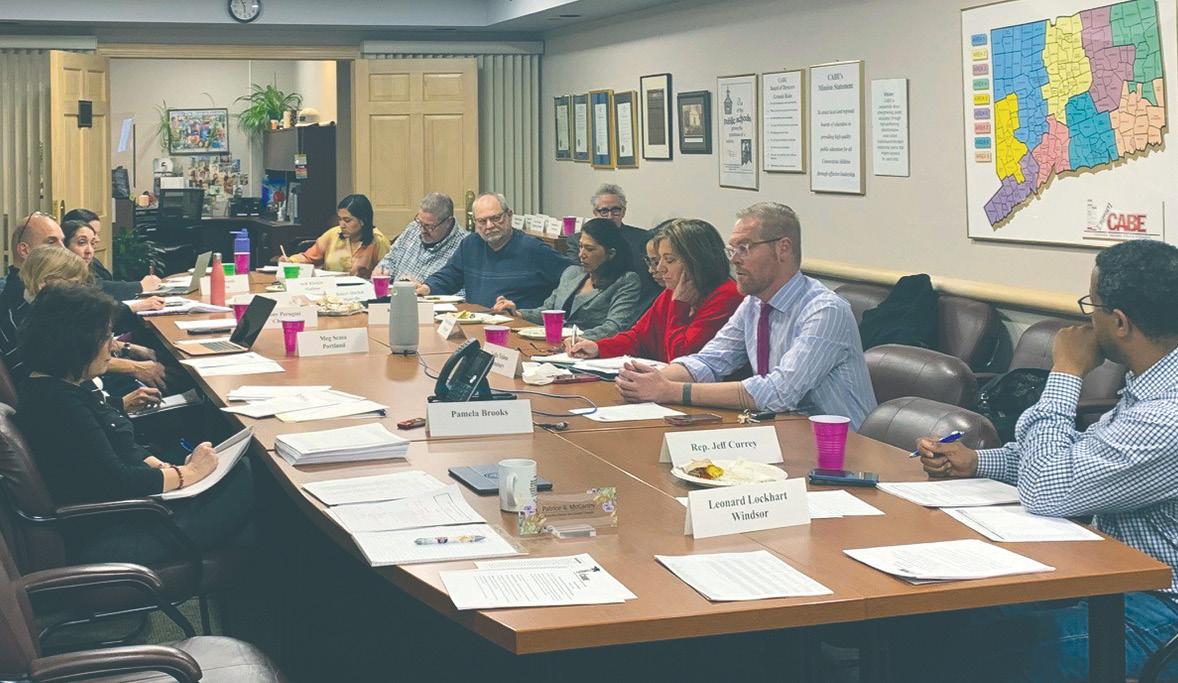





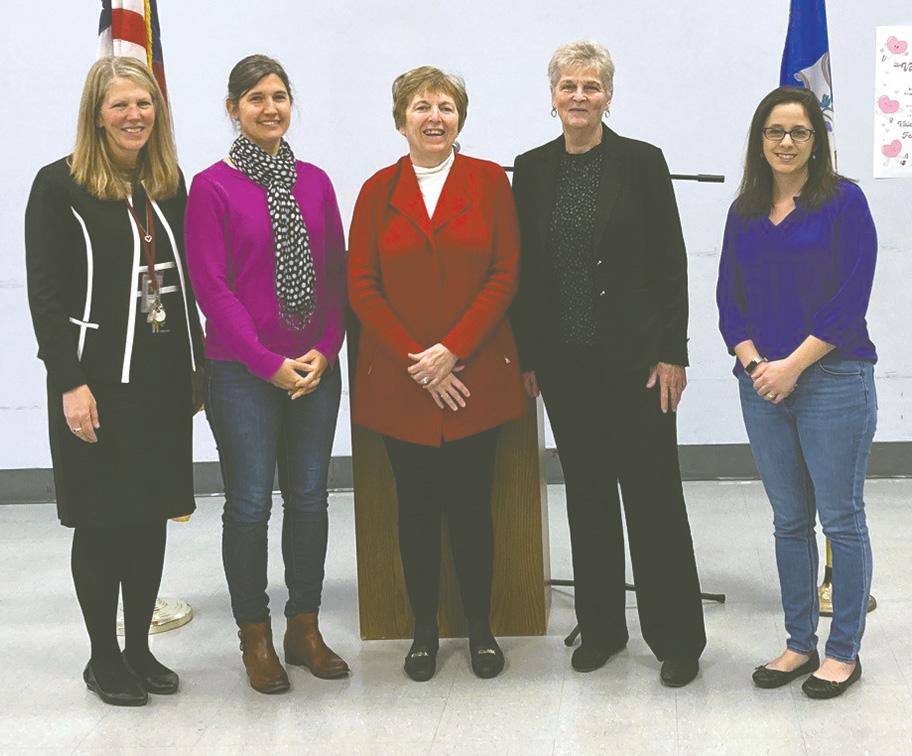



Featured on the EdSight website, the Connecticut State Department of Education has released a report on mental health staff in schools. The report is entitled the Mental Health Staff Ratio Report and it includes data related to four roles: certified school counselors, certified school psychologists, certified social workers, and school nurses.
For those unfamiliar with EdSight, it is described on the website as “Connecticut’s official source for education data” and it is an excellent resource, and achievement, in terms of nuanced and thorough education data.
While the data is considered a report, it functions like an interactive database. There are several ways of filtering the data, including general filters such as seeing numbers by state, district, and school. The years range from the 2018-19 school year to 2022-23.
The goal of the report is to track the ratio of mental health professionals to students across the state, as mandated by recent legislation (Public Acts 2247 and 22-116). What is interesting, in terms of practical usability, is how the
data can be arranged and tailored. For example, a board member can input any grade range into the report (K-12, 6-8, only PK, etc) and see the numbers for similar districts and schools. With some Connecticut districts having only a single school and others with student enrollment in the five figures, tailoring the data is a useful mechanic for establishing relevant comparisons aside from statewide averages.
For boards of education, such comparisons may be helpful as staff roles may have been created or expanded in the wake of ESSER funding, a funding route that is soon wrapping up. Mental health staff being the focus of a report that is interactive may be able to provide districts with insight into the prevalence, or conspicuous lacking, of such roles in similar districts. And of course, boards of education are in budget season.
Here are some statewide ratios included in the report regarding grades PK-12 for the 2022-23 school year:
• Certified School Counselors: 1 to 333 (i.e., 1 full-time certified school counselor to every 333 PK-12 students).
• Certified School Psychologists: 1 to
494.
• Certified Social Workers: 1 to 384.
• School Nurses: 1 to 365.
Note that the 2022-23 statewide ratio regarding certified school counselors improves to 1 to 179 when the grade range is limited to grades 9-12 instead of PK-12.
As final notes on the data filtering mechanisms, in case it may drive additional education leaders to the report, is that the data can be grouped by organization type (e.g., CTECS, RESCS, public charter schools, and others) and support designation (Alliance Districts, Commissioner’s Network Schools, Turnaround Schools, among others). And the report will be expanded beyond the four aforementioned staff roles, and in the future will include: trauma specialists, behavior technicians, board certified behavior analysts, and marriage and family therapists. A copy of the report and its data can be retrieved at: https:// public-edsight.ct.gov/educators/mentalhealth-staff-ratios
The mental health of students should always be a priority for education leaders, but the upcoming spring also ushers in May as national Mental
Health Awareness Month. And in Connecticut, May 26 is Get Outside and Play for Children’s Mental Health Day, as mandated in 2022 by Public Act 2281, which is intended “to raise awareness about issues relating to children’s mental health and the positive effect that being outdoors has on children’s mental health and wellness.” Districts should look to the CSDE to notify districts of the designation and to release guidance on how to observe the day in schools, as the Department is annually required to do under the Act.
CABE’s long-time Administrative Associate for Policy Services, Terry DeMars, retired on February 29. Terry joined the CABE staff in October of 2004 and worked on policy projects with CABE member districts.

Join us in congratulating Terry on her retirement and thanking her for nearly 20 years of service to CABE and our members!

Thank you, Board of Education members!
The month of March is Connecticut Board of Education Member Appreciation month. This is the perfect opportunity to say “thank you” to the hard-working and dedicated board members across Connecticut. We encourage you to recognize the time and effort they devote to board business during the course of the year. Use #BoardAppreciationMonth and #THANKYOU when thanking your Board members on social media.
CABE will be sharing Board of Education Appreciation videos during March. We encourage you to share these at a Board of Education meeting in March.
The Connecticut Board of Education Member Appreciation online toolkit includes facts about Connecticut’s Board of Education members and quotes you can use in recognizing Board members. You can also access customizable materials such as editorials, new releases, suggestions for saluting school board members, and more in the Members Only section of the CABE website: https://www.cabe. org/members/board-of-ed-appreciation-toolkit. You may also purchase Thank You Hershey bars, “Out of the public schools grows the greatness of a nation” note pads, and Thank You tumblers at https:// www.cabe.org/page.cfm?p=1281.
On behalf of all of us at CABE, we thank Connecticut’s Board of Education members for the dedication they show not only to each
child in their districts, but also to each child in Connecticut! You are making a difference!
Please contact
Lisa Steimer(lsteimer@cabe.org) if you have any questions about the Board of Education Appreciation Month program.

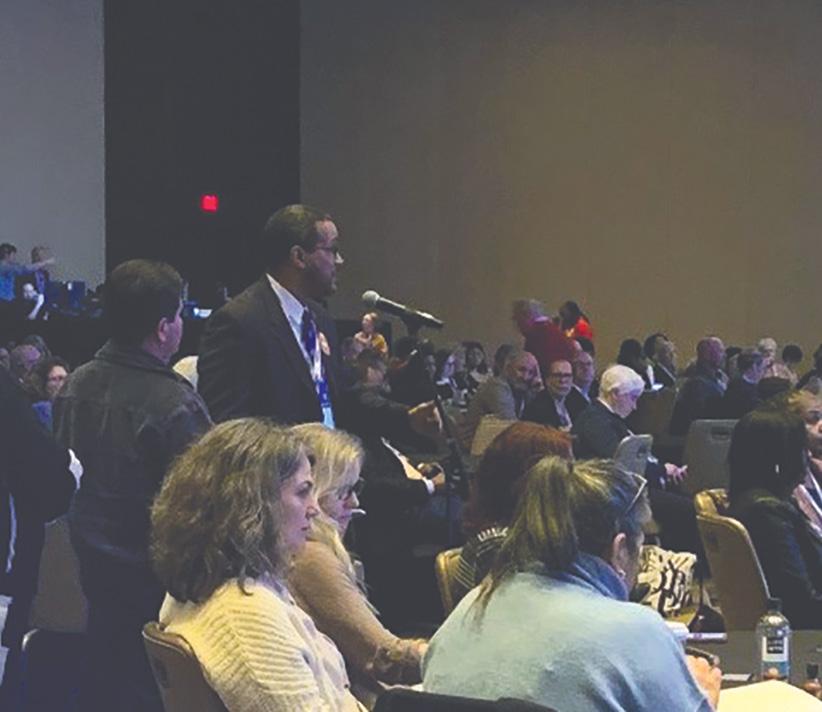

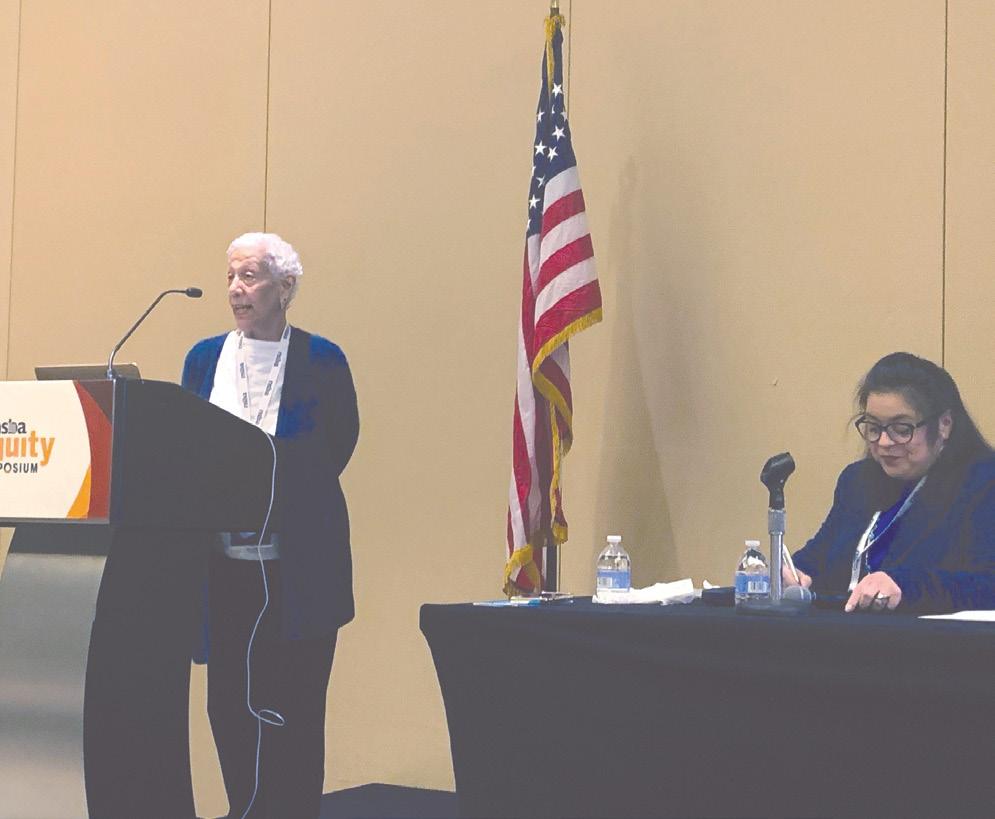
programs.
At a recent meeting, Council members received a report on several initiatives designed to increase educator diversity in Connecticut. TEACH Connecticut is a partnership between the Department of Education Talent Office and TEACH, a national non-profit organization, to support future teachers. Strategies include high school mentorships to inspire students of color to become teachers, recruitment of paraprofessionals and increasing the number of applicants of color in educator preparation
The Council received updates on three educator diversity initiatives. The Department has provided webinars and online resources on the implementation of the new legislative requirements for district plans to increase educator diversity (PA 23-167, Section 10). Initial plan submissions are due March 15, 2024 but districts can request a one-month extension. Board of education approval of the plan is required, and districts can revise previously approved minority recruitment plans to reflect new legislative language.
The Aspiring Educators Diversity Scholarship is available to students who graduated from a public high school in a priority school district and are enrolled in an approved educator preparation program in Connecticut. Up to $10,000 is available annually for undergraduate and graduate programs. A total of 29 applicants received scholarships this year. Council members expressed a desire to pursue legislation to expand eligibility to included diverse students who graduated from public high school in any community, which would expand eligibility to those who attended
magnet schools or participated in Open Choice.
The Connecticut Educators Rising program is in its third year, with 22 districts currently enrolled serving more than 500 students. The program creates a pathway for students who want to pursue a career in education. Data shows that 60% of teachers work within 20 miles of where they attended high school, illustrating the value of “grow your own” initiatives.
The Council meets quarterly to monitor the educator diversity initiatives.
Led by CABE’s Vice President for Professional Development Eileen Baker (Old Saybrook), the CABE/CAPSS Convention Committee has begun the process of planning YOUR November 15-16, 2024 CABE/CAPSS Convention! An event such as the Convention requires a year of work by both the Committee, and the CABE and CAPSS staffs. We often are asked, “How do CABE and CAPSS put together the Convention? What goes into deciding speakers and workshops?”
At the first meeting of the year, the Convention Committee reviewed the evaluation data you submitted on Convention workshops and the overall Convention. The Committee takes this feedback seriously, and when possible and reasonable, acts on the feedback.
The Committee always has a lively conversation at the first meeting regarding the Convention theme and workshop strands. This year was no different. After a rich conversation, the Committee voted that the theme of the 2024 CABE/CAPSS Convention will be Championing Our Schools through Unity of Purpose. Workshop strands, which provide additional framework for the workshops to be presented at the Convention are: Advocacy for Public Education; Civility; Diversity, Equity and Inclusion; and Tools for Newer Board Members and Superintendents
Convention Workshop Call for Proposal information will be emailed
to CABE member board chairs, superintendents, and others in early March. The deadline is April 5. Specific deadlines and criteria are included in the Call for Proposal information. On behalf of the CABE/CAPSS Convention Committee, I encourage your school district to consider submitting a proposal.
The CABE/CAPSS Convention Committee will meet in early spring, as will several subcommittees. By the end of April, the workshop subcommittee will make recommendations to the Committee with regard to workshop proposals received. The Committee will make their final determinations on proposals to be accepted. Notification to all who submitted proposals will be sent in early May.
You will receive information on entering YOUR district’s talented students to perform or exhibit their talents! Entries are due May 17. A subcommittee meets to review each entry and make a determination on which performing groups will kick off our Friday and Saturday morning activities. This is the most difficult meeting of the planning process. Connecticut has such a wealth of incredible students! Show off you talented students at the 2024 CABE/CAPSS Convention!
After the Committee’s April meeting, a great deal of work goes on behind the scenes with communications between staff and Committee members regarding General Session speakers, sponsor and exhibitor recommendations, workshop moderators, and logistics. All the while, staff is working on generating information
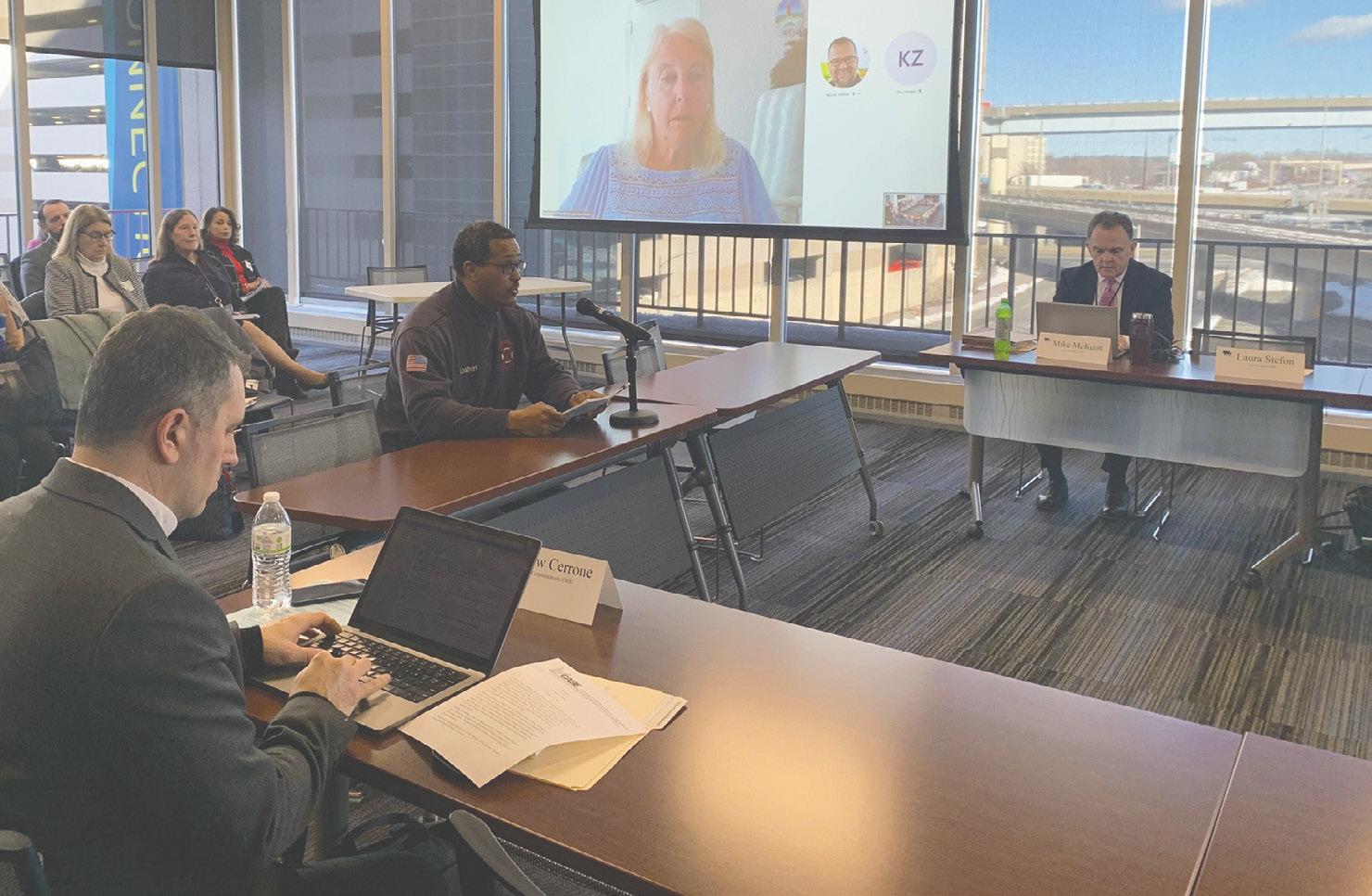
for you that will be emailed, mailed or accessible online, securing sponsors and exhibitors, looking for ways to improve content delivered and working with the Convention site staff to ensure a positive experience for all!
Due to the many moving parts, the planning process can be likened to putting a puzzle together. There is a very specific way the pieces fit together. We are fortunate to have a Committee that has the tenacity to stick with the puzzle for 12 months and are able to enjoy the outcome of their puzzle building.
Over the coming months, the CABE/CAPSS Convention Committee will be releasing details as they
come together. You will find these announcements in the CABE Journal, in the Wednesday What’s Going on at CABE email blast, online and in your mailbox.
If you have an interest in serving on the CABE/CAPSS Convention Committee, please contact Lisa Steimer at CABE at either 860-5717446 or lsteimer@cabe.org
All of us who work very hard to create the CABE/CAPSS Convention year in and year out look forward to seeing you at the 2024 CABE/CAPSS Convention, Championing Our Schools through Unity of Purpose on November 15-16, 2024 at the Mystic Marriott Hotel in Groton.

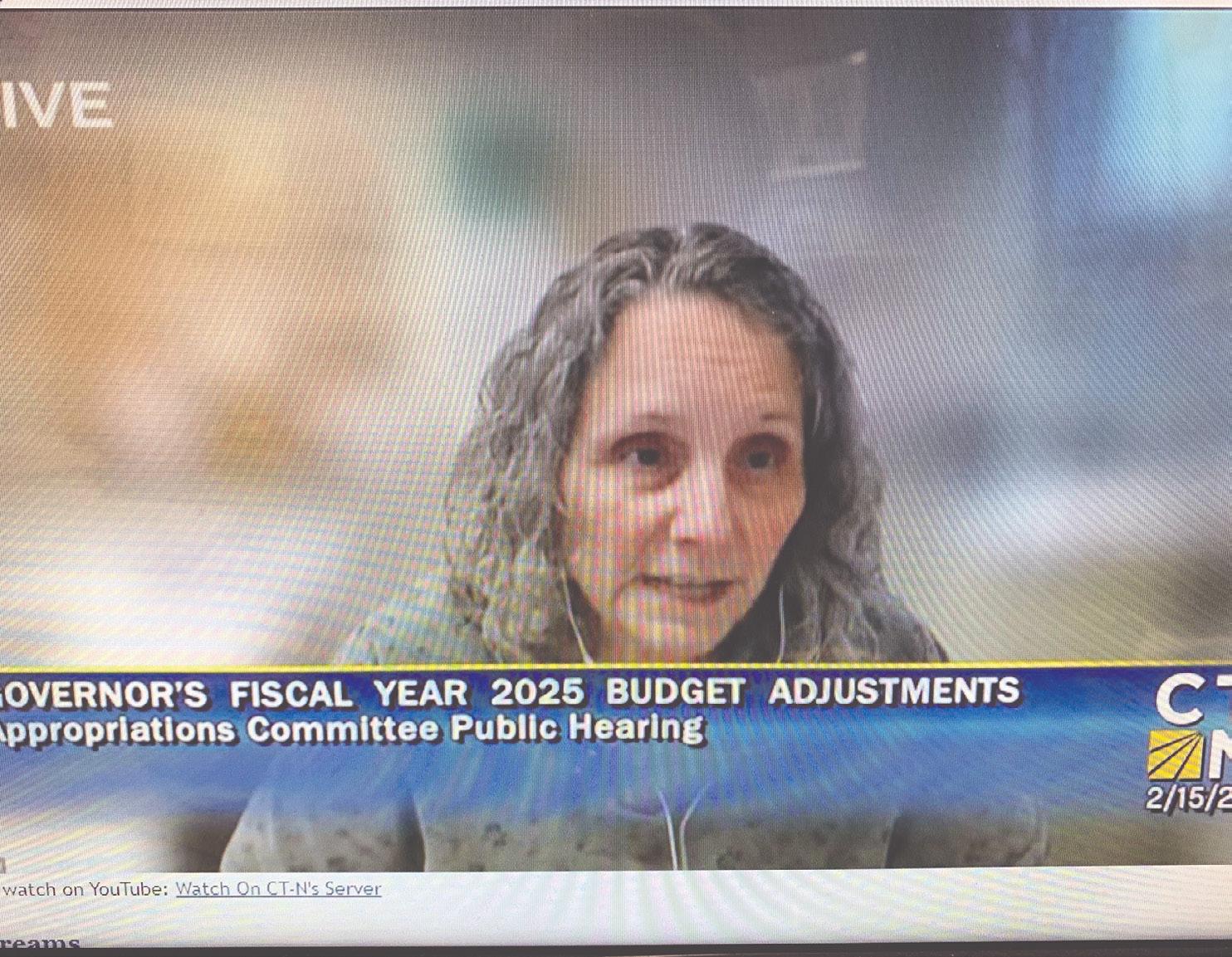

The Bushnell, Hartford Keep the Promise!
Scan the QR code below to register:
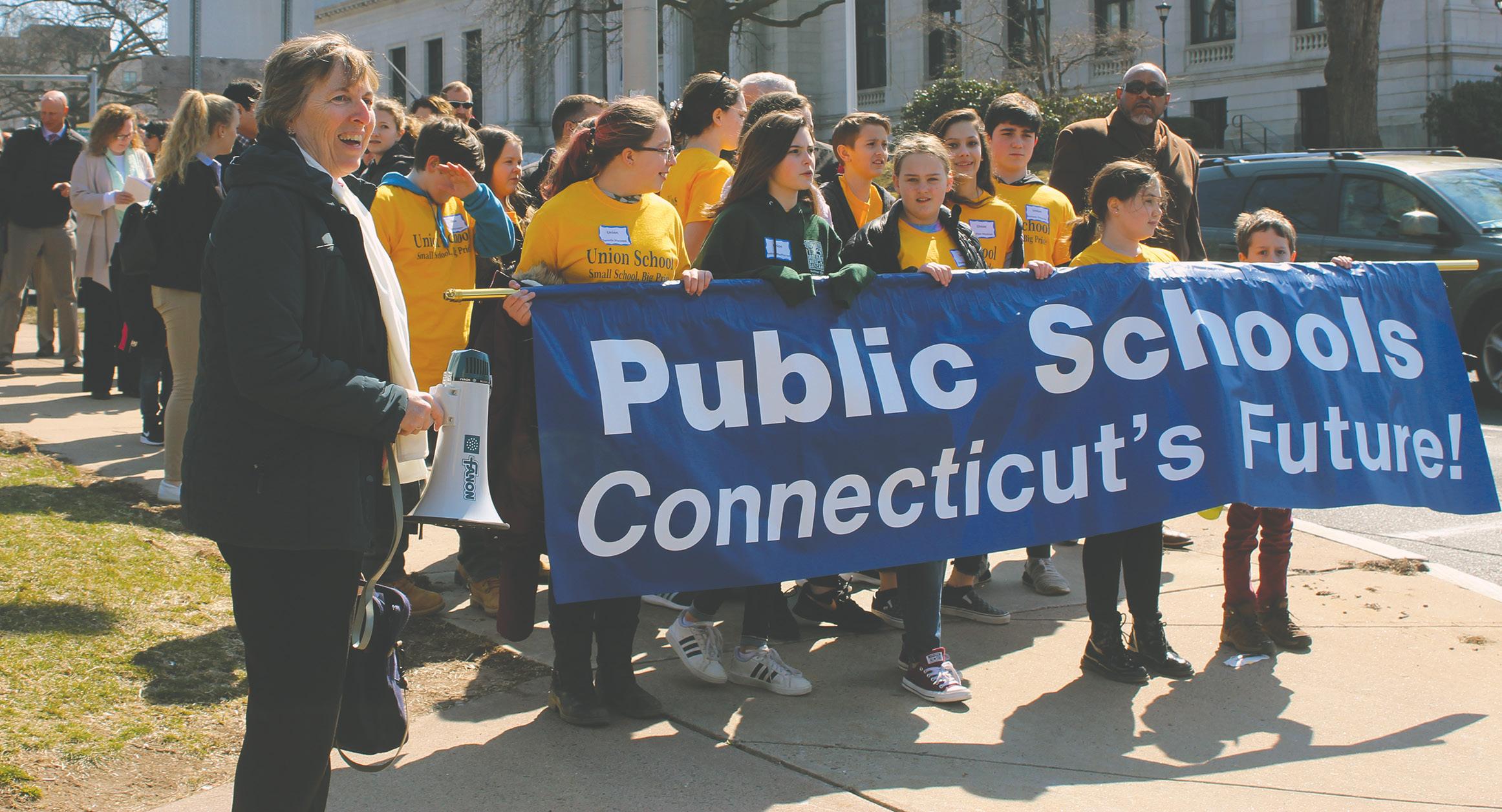
The Connecticut State Board of Education adopted the Connecticut Leader and Educator Evaluation and Support Plans at their February meeting. The plans had been developed through consensus by the Educator Evaluation and Support (EES) Council, where CABE President Leonard Lockhart (Windsor) and Immediate Past President Liz Brown (Waterbury) represent CABE. Leonard, testifying at the State Board of Education meeting in support of the plan, stated “the new guidelines promote educator and teacher continuous improvement to support both student and educator learning, development, growth and achievement.
There is a strong focus on professional learning for educators, and we know boards of education must make support for professional learning a budgetary priority”. Local
Professional Development and Evaluation Committees (PDECs) can adopt the Connecticut model plans as presented, adapt them, or revise their existing Evaluation and Support System to align with the Connecticut guidelines.
The State Board of Education also received the 2022-23 report on Student Discipline in Connecticut Public Schools. Due to the variation in learning models caused by the pandemic, 2019-20 and 2020-21 data are not included in the report. The report shows that from 2018-19 to 2022-23 the total number of in school suspensions decreased by 7.5 percent, but the total number of out of school suspensions increased by 14.4 percent and expulsions increased by 31.4 percent. In 2022-23 more than 37,500 students (7.7 percent) or approximately one out of every 14 students statewide received a suspension or expulsion.
Disparities remained in the

suspension rates between Black/ African American and Hispanic/Latino students and white students. One out of 23 white students received at least one suspension, one out of seven Black/ African American students and one out of 11 Hispanic/Latino students were suspended. The data also indicates that suspension rates in the middle school grades in 2022-23 are substantially higher than pre-pandemic. Male students are suspended or expelled at greater rates (8.9 percent) than females (5.1 percent).
The State Department of Education has provided a system of support and action planning to districts with a disproportionate number of suspensions and expulsions. The Department works with the Connecticut School Discipline Collaborative to develop strategies to reduce the overall and disproportionate use of exclusionary discipline. Patrice McCarthy represents CABE on the Collaborative to develop a system that is datadriven, evidence based and includes a multitier system of support.
The State Board of Education also received a report on Agriculture
Science and Technology Education (ASTE) graduates five years after graduation. The findings in the Report include:
n More than 92 percent of students who enrolled in an ASTE center as Grade 9 students graduated from that center.
n Ninety-two percent of ASTE students who started a degree program earned the degree.
n Fifty-three percent have a degree from a four-year college or university.
n Ninety-six percent of respondents who started a four-year college degree program earned a degree.
n Twenty-six percent are still in college or another advanced study or training program.
n Nine percent own a business.
n Ninety-three percent are employed; and
n Twenty percent are employed fulltime in an agriculture-related field. The report emphasized the need to continue support for the Agriculture Science and Technology programs.
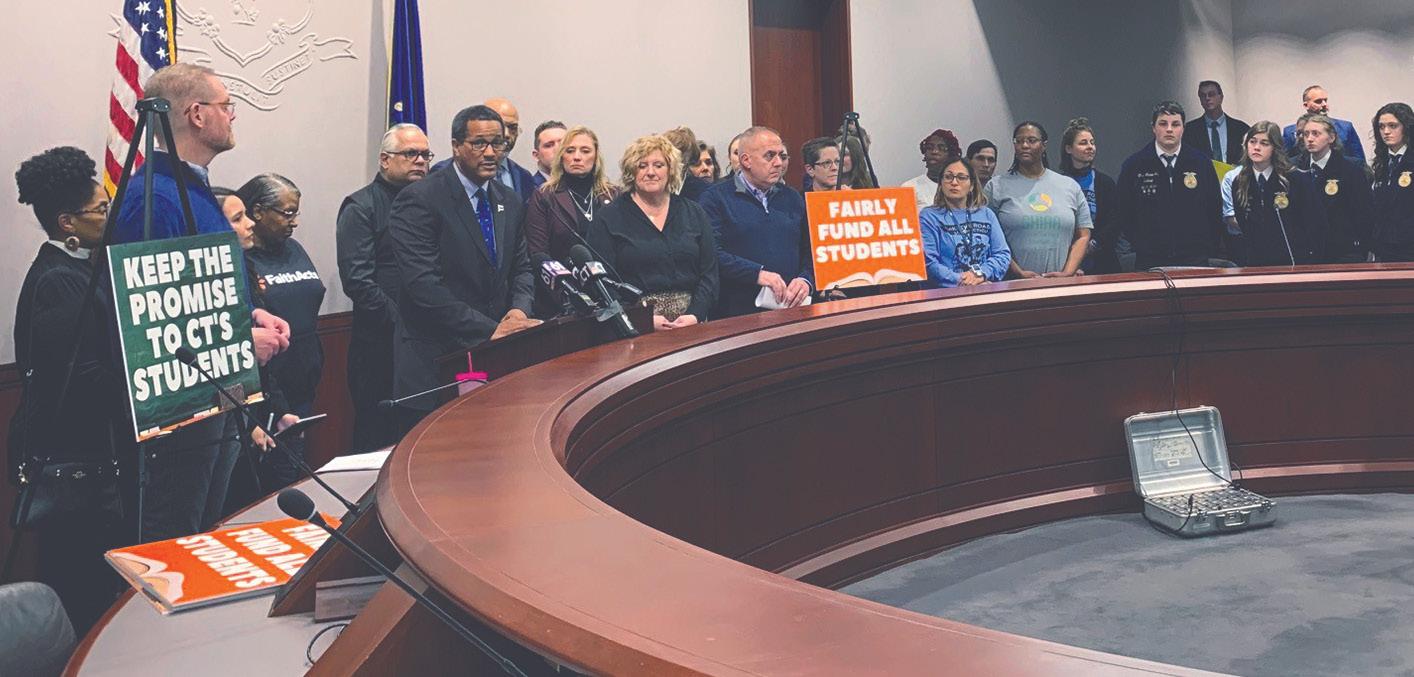
Editor’s Note: This article first appeared in the March 2022 CABE CONNection service.
Few reports are more important — or drier to read and more difficult to understand — than your district’s budget document. Page after page of numbers, usually with little explanation about what they represent. And typically, there’s little context for how the budget was developed and why different programs or line items were funded.
That’s why it’s important that districts “uncomplicate” the process as much as possible, so the public doesn’t have to be accountants or bankers to understand it.
Link the numbers to the “real world”
A good first step is to simplify the budget document by using straightforward language and eliminating the jargon that only educators are familiar with. Include a short summary at the start of each section, with explanations about how different budget items relate to student learning and success. For example, if there is a beefed-up investment in technology, include an explanation of what that means. Will it provide more computers so that every child has access to a device? Will it speed up connection rates so that all students can work on state testing on the same day, rather than staggered schedules?
Or how about the new math curriculum that is in the budget? Include a short explanation about what that means. Will every student now have access to their own book to take home?
If there are cuts to a particular program or area, outline how that will impact students. Will you have to eliminate any classes? Will there still be educational assistants in the classrooms?
Engage the community in setting funding priorities
The money in school budgets comes from tax revenues, so community members naturally are interested in how their tax dollars are being spent. The budget process should offer an opportunity to engage in the conversation and offer feedback,
both in written form and at public forums and meetings.
Engage your community early, before a proposed budget is presented to the Budget Committee. That way, they can help you determine the funding priorities for the new budget.
Look for ways to simplify what can be a very complicated process. Instead of having community members grapple with multi-million dollar figures in setting priorities, some districts have had success using a $100 budget. Here’s how it worked for one Oregon school district that was facing budget cuts:
The district symbolically reduced their entire budget to $100 and created a worksheet showing how much of that amount went for different categories. For instance, it might cost $16.46 for elementary teachers, 45 cents for K-12 textbooks and $12.82 to operate special education programs. Participants were each given worksheets, and then they huddled in small groups to make decisions on allocating the funds. It was an eyeopening process for many as they struggled to prioritize the programs and expenditures that were most important to them. The administration used their responses to develop spending priorities.
In Washington, districts have used a similar process with “The Budget Game,” a board game that uses poker chips or play money to help participants see the relationships in district expenditures.
Online surveys are another good tool for explaining details of the budget process and enlisting feedback. There are many free and/or low-cost survey tools available, including Google and Survey Monkey. Questions can be asked in a number of ways, from simple yes and no queries to ranking funding options in priority order. Respondents can also be given an opportunity to offer comments.
There’s a lot of planning and estimation that goes into school budgets and often a lot of uncertainty. School districts are required by law to pass a budget by June 30 each year, and sometimes they don’t know their allocation from the state before they have to pass their budget.
It’s important to help community members understand that and the other constraints districts face when crafting budgets for the following year. A few key steps in creating an open and transparent process:
• Publish a timeline that lists the dates and times for all budget meetings. Inform all key publics (parents, school staff, community members, etc.) about the budget timeline and encourage them to participate in meetings.
• Provide background information so that participants understand the budget cycle and the parameters districts face in preparing their budgets.
• Be sure to show how spending aligns with the district’s strategic goals and directions.
• Communicate frequently
throughout the budget process. Post to your website and send electronic updates immediately after each budget meeting, recapping the discussion and any decisions that were made.
• Keep your staff well-informed about the budget process and decisions. That shows respect to your employees, and it equips them with accurate, up-to-date information to share with parents and community members.
Although everyone’s priorities won’t be met in the final budget, constituents appreciate the opportunity to be involved in the process and have their voices heard.
Contributed by Connie Potter, communications consultant.
For the price of CABE dues, your board and superintendent are eligible for:
• Unlimited telephone consultation on policy issues
• Sample school board policies and regulations whenever you need them
• Unlimited telephone legal consultation from our experienced inhouse attorneys
• Unlimited tailored workshops on issues such as FOIA, roles and responsibilities, board self-evaluation and goal-setting
• Unlimited advice on key educational issues from knowledgeable, expert professionals who have great experience in helping boards better serve their communities
• Advocacy Highlights, Policy Highlights and other emailed updates, as well as the CABE Journal with information on current issues and best practices
• Unlimited help for your advocacy efforts with the Legislature, the State Board of Education and other state and federal officials
• Unlimited telephone labor relations and negotiations advice
• CABE Labor Relations survey information
• Access to our networks of school board members across the State for their advice and recommendations on issues before you, including special email groups for board chairs, policy committee chairs and other leaders.
• Crisis communications help
• Superintendent search process workshop and written guide
• Workshops to help your School Governance Councils
• Webinars on various topical issues
• Legislative breakfasts
• Education Law Summaries
• CABE Board Leadership Awards
• CABE Student Leadership Awards
• CABE’s for-fee services at greatly discounted rates
• Knowing that you are a part of a dedicated statewide education association whose mission is to ensure boards are effective and efficient.
(continued from page 1)
Membership distribution by ADM (2018-19 data from SDE)
ADM # BOD Districts
Under 1,000 4
1,000 - 4,000 16
4,000-10,000 8
Over 10,000 (9 total) 5
While the state has not updated the District Reference Groups (DRG) in several years, a look at how the board is distributed by DRG is also fairly represented across the spectrum.
Membership distribution by DRG
CABE). Fully one third of our board is comprised of Alliance District representatives.
CABE sets its policies and positions through a democratic, legislative process called a Delegate Assembly; scheduled at the same time as the annual CABE/CAPSS Convention. Each district is encouraged to submit resolutions to be voted on by the assembly and all member districts can have voting representation.
Last year’s Delegate Assembly had representation by 28 CABE member districts. While we would like to see much greater participation, at least those who participated were fairly evenly divided by district size. It was gratifying to see that 12 Alliance Districts (over 1/3rd) participated in the 2023 Delegate Assembly.
Delegate Assembly
Participation by District 2023 Alliance (*)
Bloomfield Public Schools *
Branford Public Schools
Bridgeport Public Schools *
Canton Public Schools
Cheshire Public Schools
Our CABE Board of Directors also includes 11 Alliance District representatives (there are 33 Alliance Districts; of which 28 are members of
Danbury Public Schools *
Derby Public Schools *
East Lyme Public Schools
Hamden Public Schools *
Hartford Public Schools *
Madison Public Schools
Montville Public Schools
Naugatuck Public Schools *
New Britain Public Schools *
New Hartford Public Schools
Plainville Public Schools
Portland Public Schools
Region 13 Public Schools
Seymour Public Schools
Simsbury Public Schools
Stratford Public Schools *
Thomaston Public Schools
Vernon Public Schools *
Waterbury Public Schools *
Westbrook Public Schools
Wethersfield Public Schools
Windsor Public Schools *
Woodbridge Public Schools
We also looked at where our Association presidents came from in the past 20 years. While several presidents came from larger districts, the members of smaller districts have led the Association most recently.
Data shows that there is a good cross section of board members leading CABE, but that more participation from all demographics would benefit us all.


One of the many worries that I have as a school attorney is when school board members use their e-mail account to discuss board business. As you may know, such conduct can run afoul of Connecticut’s Freedom of Information Act (“FOIA”). The purpose of this column is to give a friendly reminder and to review a new decision from Connecticut’s Freedom of Information Commission (“FOIC”).
The “Inadvertent Meeting.”
A meeting that is subject to the FOIA includes any communication by or to a quorum of a public agency, whether in person or by means of electronic equipment, to discuss or act upon a matter over which the agency has supervision, control, jurisdiction or advisory power. In light of this broad definition, the FOIC had ruled that a series of e-mails by and between a quorum of board members concerning board business may be deemed to be a “meeting” subject to the FOIA. Accordingly, if a quorum of board members e-mail one another and engage in a back and forth to discuss board business (including by taking a poll on how to vote on an upcoming matter), they may have conducted a “meeting” in violation of the FOIA’s notice and open meetings requirements.
As an example, the FOIC has found a violation of the FOIA where a quorum of board members e-mailed each other with respect to developing a public statement. The FOIC found that such e-mail communications (including “e-mail polling” to determine if a majority of the board would support issuing a public statement) constituted “communication by or to a quorum” of the board “by means of electronic equipment” and thus was a meeting under the FOIA that had not been properly noticed or opened to the public.
How much “back and forth” must take place for there to be a “meeting”?
This is where things get a bit jumbled. In 2007, the FOIC in Shea v. PZC, Town of Stonington ruled that where there was “no give and take or back and
forth exchanges between the various members” of the agency and where no members of the agency replied to the chairman’s e-mail (which concerned agency business), an illegal/un-noticed meeting had not occurred.
Subsequently, the FOIC appeared to suggest that any dialogue amongst public agency members in response to an e-mail may constitute a “meeting.” In a 2014 decision (Mauer v. Toensing), a member of a school board sent an e-mail to all of the other members of the board that included substantive discussion of board business and requested the “courtesy of a written response.” The board chairman (only) responded by an e-mail (apparently sent to the entire board) informing the board member that her original e-mail violated the FOIA. The FOIC (ironically) concluded that due to the subsequent reply e-mail pointing out the possible FOIA violation, the original e-mail constituted an illegal, unnoticed meeting.
However, in a decision just issued on January 10, 2024 (Gookins v. Member, Representative Town Meeting, Town of Groton), the FOIC did NOT find a violation of the FOIA where a member of a public agency admittedly sent e-mails to a quorum of the agency concerning agency business when no other member replied to those e-mails. The FOIC stated that while its prior decision in Mauer arguably may be construed as concluding that a single e-mail from one member of an agency to a quorum of the agency could constitute a meeting, it noted that the FOIC now does not endorse the view that a single e-mail to a quorum “without more” constitutes a meeting.
In the Gookins decision, the FOIC cautioned that communicating by e-mail about agency business may inadvertently initiate an illegal meeting, especially if the e-mail contains “substantive comments” about agency business. The FOIC noted that while a single, isolated e-mail from one member to the other members may not be a meeting, such an e-mail may then “elicit a response from one of more other members, even if the sender did not intend to do so.”
As such, it is better to be safe than
sorry. School board members should not use e-mail as a substitute for discussion or deliberation at public meetings, and should bear in mind the following: first, be wary of sending an e-mail to the entire membership (or quorum) of the board that discusses board business (due to the possible unintended consequences caused by members replying); and second, if you receive such an e-mail, do not reply (and especially do not hit the “reply all” button). It is best that any e-mail sharing information with the entire board prior to a meeting clearly warn the recipients against replying to the e-mail.
Please note: The FOIA explicitly provides that a communication limited to notice of a meeting (and an agenda) does not constitute a meeting.
Attorney Sommaruga is the author of
“Understanding Connecticut’s Freedom of Information Act” (6th Edition 2023), which has just been released and is available through CABE. Pullman & Comley is a CABE Business Affiliate.
Engagement and Attendance Program, (LEAP) proven to help lessen truancy has $7 million in the Governor’s budget.
If you haven’t asked your legislators to come before your board so that you may tell them what is and isn’t working and how was is proposed will impact your specific students and school system - Do. It. Now. When they are informed they can better represent your interests and thank themyour issues are but a few of the many competing issues they will consider.

